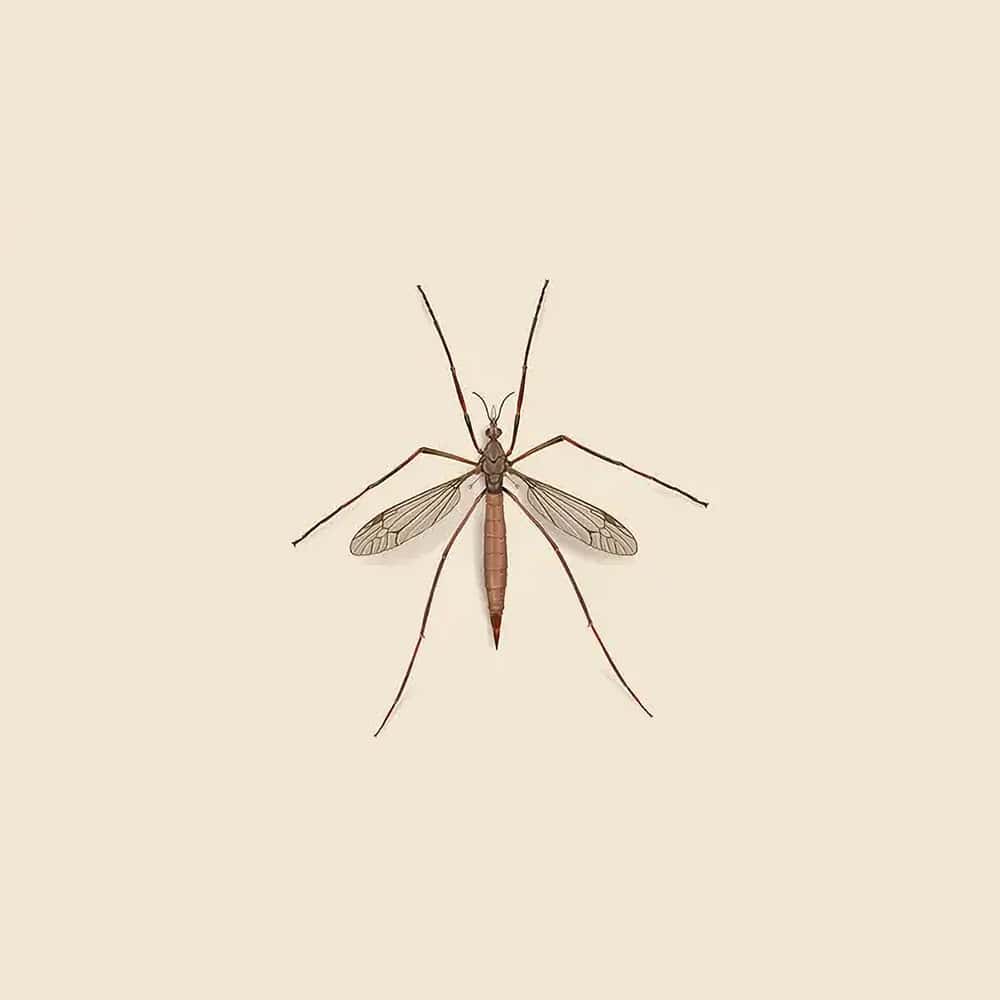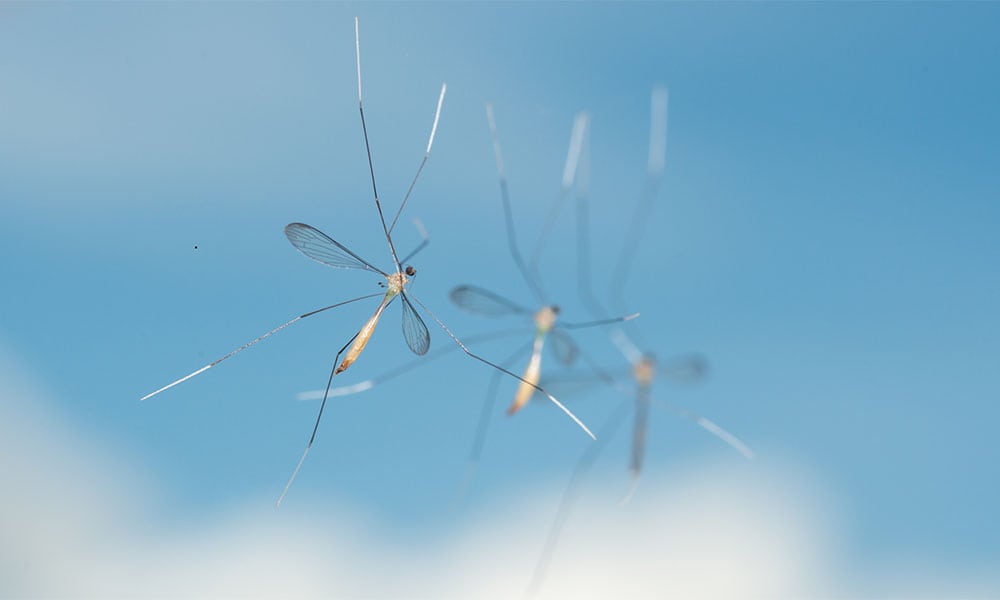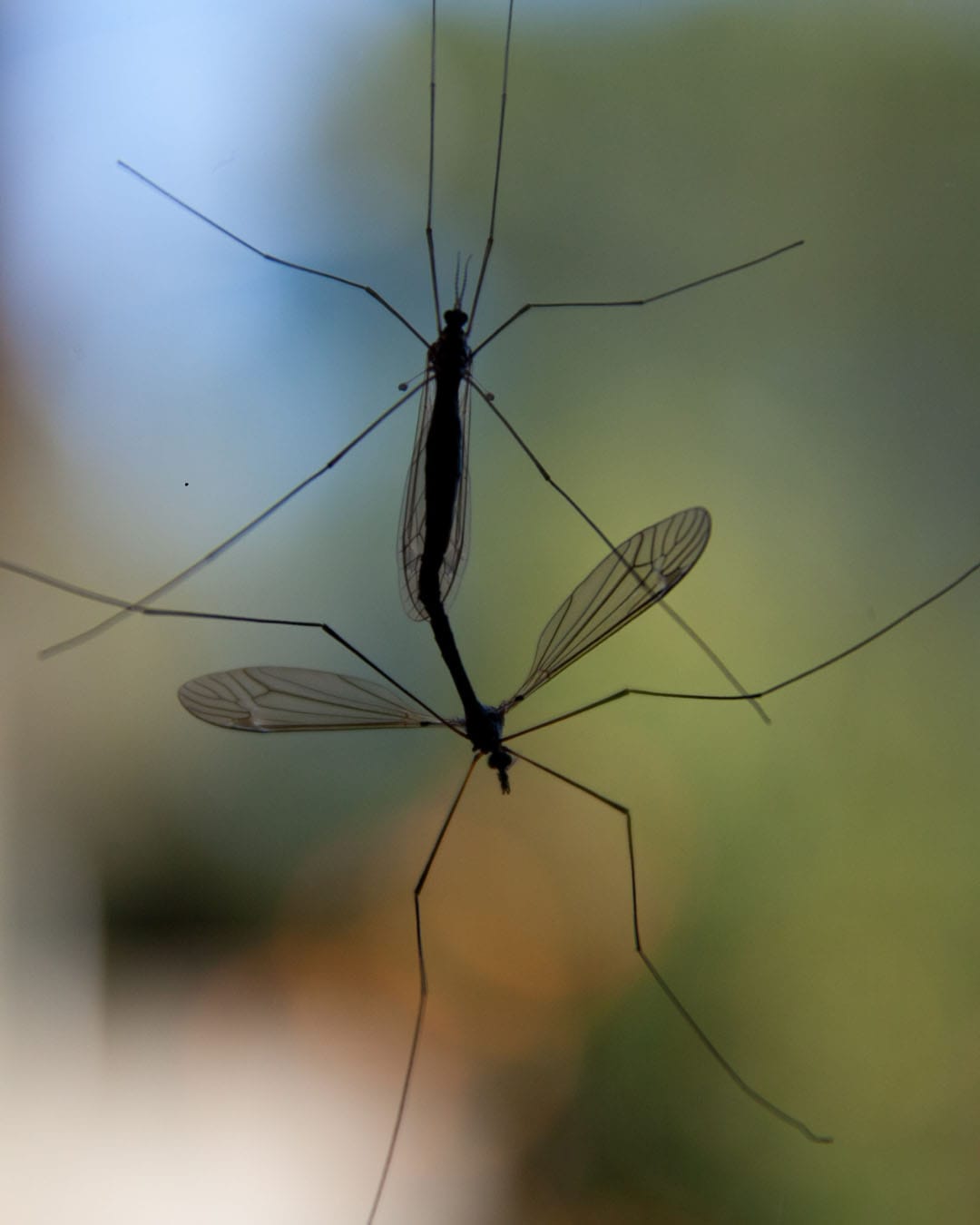Crane Fly Facts & Information
Crane flies, often mistaken for large mosquitoes, are primarily a nuisance pest that can become problematic when they infest lawns and gardens. While adult crane flies are harmless, their larvae, known as leatherjackets, can cause significant damage to grass and plant roots.

Tipuloidea
What You Need To Know About Crane Flies
What do crane flies look like?
Crane flies are large, slender insects resembling oversized mosquitoes. They have long, delicate legs and a wingspan of about 1 to 3 inches. Their bodies are typically light brown or gray, and they have elongated abdomens.
What do crane flies eat?
Adult crane flies do not feed and only live for a short time to mate and lay eggs. Their larvae, known as leatherjackets, feed on decaying organic matter, plant roots, and grass. Some species’ larvae can be pests in lawns and gardens.
What sort of habitat do crane flies live in?
Crane flies are commonly found in moist environments such as wetlands, streams, ponds, and damp grasslands. They are often seen around homes and gardens, especially after rain. The larvae prefer moist soil and are typically found in grassy areas or near water sources.
How do crane flies commonly behave?
Crane flies are mostly nocturnal and are attracted to lights at night. They are weak fliers and are often seen resting on walls or vegetation. The adult flies emerge in large numbers during their mating season, but they do not bite or sting.
Did you know this about crane flies?
Despite their appearance, crane flies are harmless to humans and do not bite or carry diseases. They are often mistaken for giant mosquitoes, but they play a different role in the ecosystem. The larvae, or leatherjackets, are important decomposers, helping to break down organic matter and recycle nutrients in the soil. Interestingly, some crane fly species have aquatic larvae that contribute to the health of freshwater ecosystems.
Understanding Crane Fly Infestations
Understanding crane fly infestations is crucial for effective management. Adult crane flies emerge in large numbers during the spring and fall, often swarming around lights and windows. The real issue, however, lies with their larvae, which feed on the roots of grasses and other plants, leading to brown patches and weakened lawns.

How Hearts Handles Crane Fly Treatment
Hearts Pest Management employs an integrated pest management approach to handle crane fly infestations. Our process begins with a thorough inspection to identify infested areas and assess the extent of damage. We then develop a customized treatment plan that may include cultural practices, biological controls, and targeted insecticide applications, ensuring the health and vitality of your lawn and garden.
Crane Fly Inspection
Crane Fly Treatment
Crane Fly Prevention
Educational Resources

Think You Might Have a Crane Fly Infestation?
At Hearts Pest Control, we understand the challenges associated with Crane Fly infestations and are here to provide professional solutions tailored to your needs. Flourishing in warm and humid climates, they are prevalent in many regions, including San Diego County, Orange County, and Los Angeles County.